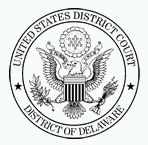Patent Directed to System for Remote Mirroring of Digital Data Found Invalid under Section 101

Intellectual Ventures brought a patent-infringement suit against Symantec Corpo. and Veritas Technologies asserting that Symantec's VVR product infringes claims 25 and 33 of U.S. Patent No. 5,537,533. Among other motions decided here, the District Court granted Symantec's motion for summary judgment of patent ineligibility.
Patent-Eligible Subject Matter
The Court followed the two-step framework for distinguishing patents that claim laws of nature, natural phenomena, and abstract ideas from those that claim patent-eligible applications of those concepts. First, courts must determine if the claims at issue are directed to a patent-ineligible concept -- in this case, an abstract idea. If so, the next step is to look for an inventive concept -- i.e., an element or combination of elements that is sufficient to ensure that the patent in practice amounts to significantly more than a patent upon the ineligible concept itself.
Turning to the patent-at-issue, the '533 patent describes and claims a system for remote mirroring of digital data from a primary server to a remote server.
Independent claim 25 reads:
25. A method for remote
mirroring of digital data, said method comprising the steps
of:
copying the data from a primary network
server to a nonvolatile data buffer in a data transfer unit which
is digitally connected to the primary network server, the primary
network server including an operating system which is capable of
accessing a nonvolatile server store, the data copied to the data
transfer unit being a substantially concurrent copy of data which
is being stored by the operating system in the nonvolatile server
store of the primary network server;
copying the data from the data transfer
unit to an input end of a communication link which has an output
end physically separated from its input end;
generating and sending a spoof packet to
the operating system of the primary network server; and
copying the data from the output end of the
communication link to a nonvolatile server store on a remote
network server.
Claim 33, which depends from claim 25, adds: compressing the data prior to said step of copying the data from the data transfer unit to the input end of the communication link; and decompressing the data after said step of copying the data from the output end of the communication link.
Step One
The abstract idea step of the inquiry calls upon the Court to look at the focus of the claimed advance over the prior art to determine if the claim's character as a whole is directed to excluded subject matter.
IV argued that the claims are not directed to an abstract idea but are instead a precise, innovative, and technical solution to the problem of protecting critical data during power interruptions or system reboots, and that solution, according to IV, involves the use of nonvolative data stores and the transmission of spoof packets to ensure that data copying can be continued in the event of interruptions in power or other events threatening data integrity.
Symantec countered that the claims are directed to the basic abstract idea of storing an up-to-date backup copy of data at a remote location, and that this is the sort of thing that humans have done for centuries, even before computers.
The Court, considering the claims as a whole, agreed with Symantec that the focus of the claims is the abstract idea of backing up data. The claims recite the basic steps of copying data from one location to another several times and sending a confirmation that the data has been received. It is undisputed that institutions have long backed up data in general, and the specification even describes long-practiced methods of backing up digital data.
However, the specification identifies several disadvantages of the prior art back-up methods. But the claims do not provide any concrete details that limit the claimed invention to a specific solution to the problem of remote back-up of digital data. The claims simply rely on functional language to describe copying and confirmation steps. Additionally, the claims use existing computer functionality as a tool to better back up data and do not themselves purport to improve anything about the computer or network itself. As a result, the Court found that, unlike Enfish and McRO, the claims do not improve the way computers store information or otherwise function. Rather, the claims rely on the ordinary storage and transmission capabilities of computers within a network and apply that ordinary functionality in the particular context of remote mirroring.
Step Two
At step two, courts must look to both the claim as a whole and the individual claim elements to determine whether the claims contain an element or combination of elements that is sufficient to ensure that the patent in practice amounts to significantly more than a patent upon the ineligible concept itself. The step two inquiry includes consideration of whether claim elements simply recite well-understood, routine, conventional activities.
The inventive concept inquiry requires more than recognizing that each claim element, by itself, was known in the art. Even when the limitations of the claims, taken individually, recite generic computer, network and Internet components, none of which is inventive by itself, if that ordered combination of these limitations is new, they may be patent-eligible under step two.
Turning to step two, the Court again agreed with Symantec that the claims lack anything sufficient to transform the abstract idea into patent-eligible subject matter. The claims invoke conventional computer components that do not supply an inventive concept, and IV does not seriously contend otherwise.
IV contended that when considered as an ordered combination, the claims provide specific, claimed limitations of using a nonvolatile data store and sending the spoof packet prior to undertaking a data write that transform any alleged abstract idea into a particular, practical application of that abstract idea.
But IV did not describe how these components function in combination in an arguably inventive way or what it may be about this arrangement of components that engenders the alleged improvement, and the claims provide little guidance.
At most, the '533 patent identifies a problem in the prior art: available methods for backing up digital data were insufficiently reliable for mission-critical data, because the copies were not substantially current. But the patent's claimed solution merely restates the problem to provide a method for remote mirroring of digital data, in which the data copied is a substantially concurrent copy.
Such an attempt to claim the abstract idea of a solution to the problem in general, as opposed to a particular solution, confirms the patent ineligibility of these claims.
As a result, the Court granted Symantec's motion for summary judgment of patent ineligibility.
Memorandum Opinion by District Judge Stark
The content of this article is intended to provide a general guide to the subject matter. Specialist advice should be sought about your specific circumstances.

